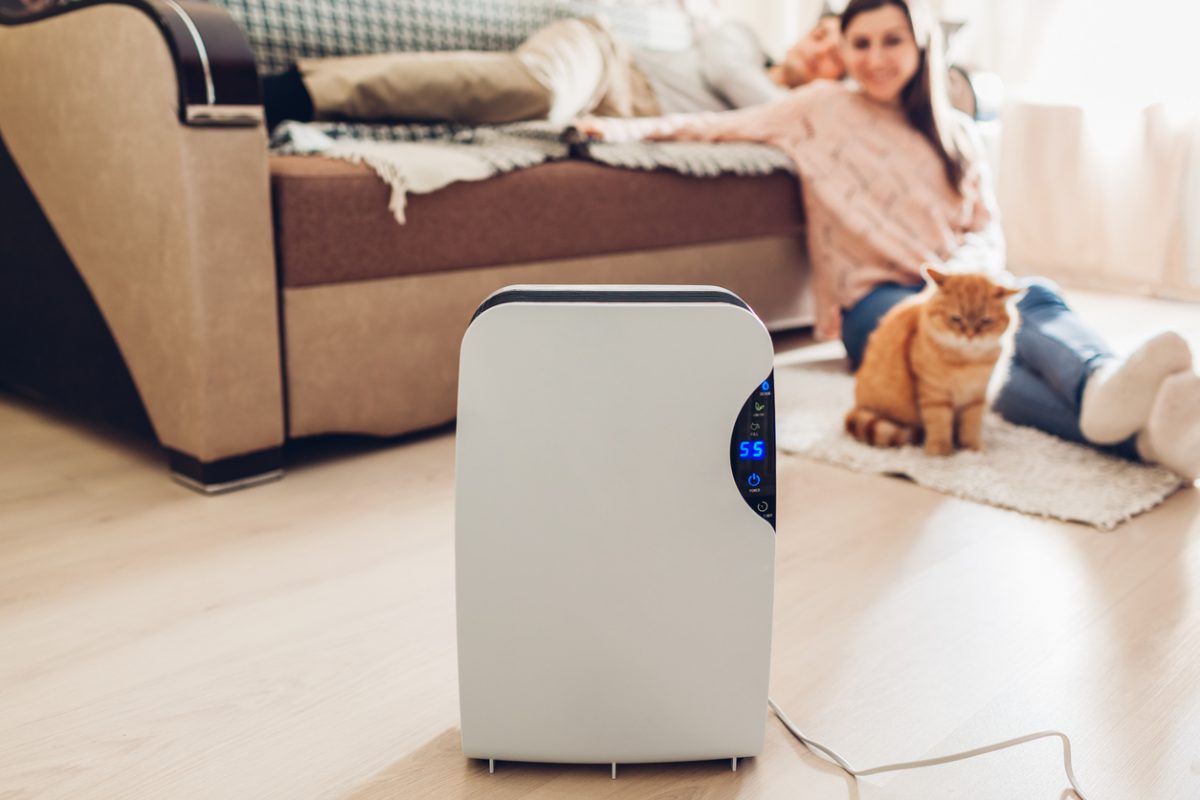
For decades, allergy sufferers, pet owners and others have relied on room air cleaners for better indoor air quality and to help reduce symptoms. Air cleaners have a well-earned reputation as a must-have appliance for households that want to cut down on particulate pollutants like tobacco smoke, dust and pollen.
Over the past two years, however, the expectations for an air cleaner’s performance have grown. Because of the COVID-19 pandemic, air cleaners have gained prominence as an important tool for reducing airborne viruses and bacteria. An AHAM survey of consumers in late 2020 found that 42% reported using their air cleaners more than they did prior to the pandemic, and almost half said they were taking steps to improve the air quality in their homes.
Even beyond the pandemic, awareness has grown about how certain chemicals affect indoor air. AHAM’s survey found that, in addition to viruses, smoke, dust and pollen, consumers were concerned about the effects of mold, chemicals and PM 2.5 (particulate matter). People who live in areas affected by wildfires also rely on air cleaners to mitigate the effects of smoke on indoor air quality.
The Clean Air Delivery Rate, or CADR—the rating given to air cleaners that have been tested under AHAM’s Air Cleaner test methods. The AHAM Verifide® Program is the only program testing air cleaners in an independent laboratory, and providing confidence to consumers that an air cleaner meets performance claims. However, until now, consumers who were interested in using an air cleaner to address pollutants beyond smoke, dust and pollen did not have a consistent way to compare models. That is about to change.
It’s a new era for clean indoor air, and AHAM, industry experts and manufacturers are responding with new air cleaner test methods that will give consumers additional ways to compare performance for more clean air concerns, including an air cleaner’s ability to remove viruses, bacteria, mold and chemicals.
Microbiological pollutants
On the advice of indoor air experts and the recommendation of the U.S. EPA and the CDC, millions have enlisted air cleaners to help reduce the likelihood of COVID-19 transmission. While air cleaners don’t offer complete protection, the EPA did recommend them as part of a plan to protect against COVID-19. However, without a uniform industry standard for testing air cleaners’ ability to remove viruses, bacteria and mold, consumers had no objective way to determine which model would best serve their needs for removing microbiological pollutants.
In response to this new indoor air quality concern, a team of manufacturers, public health professionals and academic researchers, organized by AHAM, came together to develop AHAM AC-5-2022, the first air cleaner performance standard to measure removal of microbiological pollutants. Eventually, microbiological pollutants will be added to AHAM’s Air Cleaner Certification Program, and models tested under the standard will be assigned an m-CADR, which will inform consumers of that model’s capability to remove microbiological pollutants in a given room size.
Chemicals
Chemicals are present in every home. They’re often undetectable, but many can give off odors. Common sources include cooking, cleaning products, furniture, flooring and building materials. In addition, thousands of chemicals generated either indoors or outdoors can make their way into the home through the ventilation system or when people enter or exit. The vast majority are harmless, but some in high concentrations can cause health issues in people with sensitivities.
Air cleaners are made to remove many of these chemicals. But as with viruses, bacteria and mold, there was no uniform standard by which to test air cleaners’ removal of chemicals. Consumers who bought air cleaners to reduce chemical odors had to rely on manufacturers’ claims, and each manufacturer had different ways of testing. Consumers will soon have a way to easily compare models, as after three years of research and development, AHAM has published AHAM AC-4-2022, which will serve as an industry-wide standard to test air cleaners for chemical removal. Soon, air cleaners that complete chemical testing through AHAM’s Air Cleaner Certification Program will be assigned a numerical rating, c-CADR, for their ability to reduce chemicals in a given room size.
From pollutants you can see, like pollen and dust, to those invisible to the naked eye, air cleaners have evolved into the centerpiece appliance for anyone who wants cleaner indoor air where they live, work or learn.


